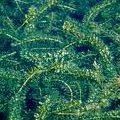- By -Staff
- News
 Print
Print  A U.S. Fish and Wildlife Service biologist recently discovered hydrilla, a highly invasive aquatic plant, in the Erie Canal in North Tonawanda, the New York State Department of Environmental Conservation (DEC) announced today. Experts at a symposium on hydrilla in Syracuse last week confirmed the identification.
A U.S. Fish and Wildlife Service biologist recently discovered hydrilla, a highly invasive aquatic plant, in the Erie Canal in North Tonawanda, the New York State Department of Environmental Conservation (DEC) announced today. Experts at a symposium on hydrilla in Syracuse last week confirmed the identification.This latest discovery creates a very high threat of infestation in New York and beyond the state’s borders through the Niagara River and the Erie Canal system by natural flow disbursal and to many more waters by recreational boating. Recreational boating is the highest risk vector for spreading this plant to other waters. DEC urges boaters to take steps to prevent the spread of this and other aquatic invasive species.
“DEC urges boaters, anglers and others enjoying New York’s incredible and abundant water resources to help stop aquatic hitchhikers”, said DEC Assistant Commissioner for Natural Resources Kathy Moser. “Inspect boats and gear for any clinging plants, mud or tiny animals; remove them, and clean and dry all boats and gear. Use DEC’s aquatic invasive species disposal stations, when available.”
“Preventing the spread of hydrilla and other invasive plants and animals in the Great Lakes is a priority for the U.S. Fish and Wildlife Service. In response to the discovery of hydrilla in the Erie Canal, Service biologists are working with others to rapidly assess if it has spread in that area," said Jaime Geiger, Assistant Regional Director for the Service's Fisheries program in the northeast.
DEC is working closely with federal and state partners including the U.S. Fish and Wildlife Service, U.S. Army Corps of Engineers, New York State Canal Corporation, the Office of Parks and Recreation and the Western New York Partnership for Regional Invasive Species Management to determine the extent of the infestation and develop recommendations for rapid response.
Prior to the discovery in North Tonawanda, hydrilla was found in the Cayuga Inlet and small, isolated occurrences on Long Island and Orange County.
Hydrilla is considered to be among the most invasive aquatic plants in North America, and has resulted in significant ecological, recreational and economic impacts in other regions of the country. Its biological traits enable it to out-compete native species and dominate aquatic ecosystems due to its ability to grow in a variety of environmental settings and to propagate and spread from fragments, turions (overwintering buds) and tubers (reproductive structures attached to plant rhizomes).
v8i38


